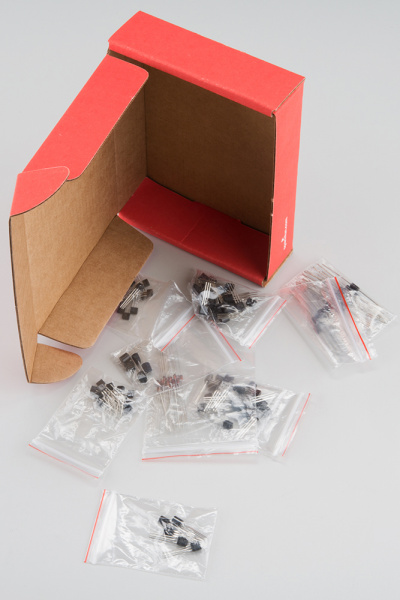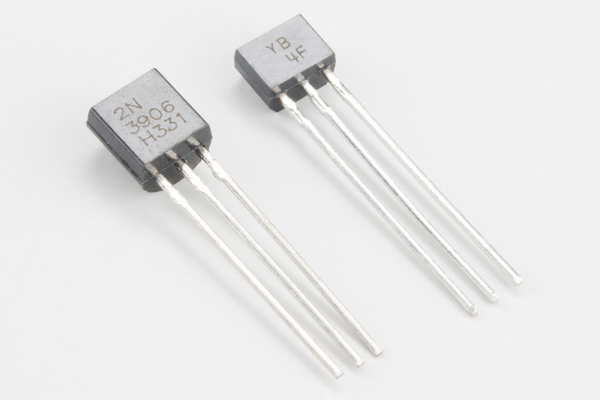Discrete Semiconductor Kit Identification Guide
Kit Contents
List of contents
You will find the following parts in the kit.
| Discrete Semiconductor Kit Bill Of Materials | |||||
| Quantity | Part Number & Link toDatasheet | Type | Marking | ||
| 25 | 2N3904 | NPN Transistor | 2N3904 | ||
| 25 | 2N3906 | PNP Transistor | 2N3906 | ||
| 10 | 5LN01SP | N-channel MOSFET | YB | ||
| 10 | 5LP01SP | P-Channel MOSFET | XB | ||
| 20 | 1N4148 | Silicon Diode | 4148 | ||
| 20 | 1N4004 | Power Diode | 1n4004 | ||
| 5 | TL431A | Voltage Reference | TL431A | ||
| 5 | LM317L | Voltage Regulator | LM317LZ | ||
A lot of these parts look very similar. The "marking" column above indicates the designation that you'll find printed in the part itself. With the exception of the MOSFETs, the marking usually contains a version of the part number. Some parts may also have additional symbols or printing, indicating things like the manufacturer and date of production.
The BJTs, voltage references and regulators are all the common TO-92 form factor, with a body about the size of a pencil eraser, and three protruding legs. The MOSFETs are the slightly smaller SC-72 (AKA "Single SPA") package.
The polarity of these devices is important, and usually referenced by pin number.
To identify the pins, hold the device so that the marking side is factng you, and the legs are pointing downwards. From left to right, the pins are numbered 1, 2 and 3. The function assigned to each pin depends on the device, and we'll cover that for each part in its respective section.
Specifications
Because discrete semiconductors are a basic building block of electronic circuits, they have much more detailed specifications than other components. A critical parameter in one application might be nonsensical in another. This makes it hard to present an abbreviated synopsis of part specs. Rather than listing some parameters inline, we've instead decided to make it easy to access the parametric information, by linking the part numbers in the table above table to the corresponding datasheets.


